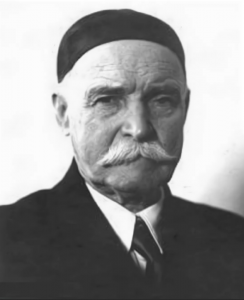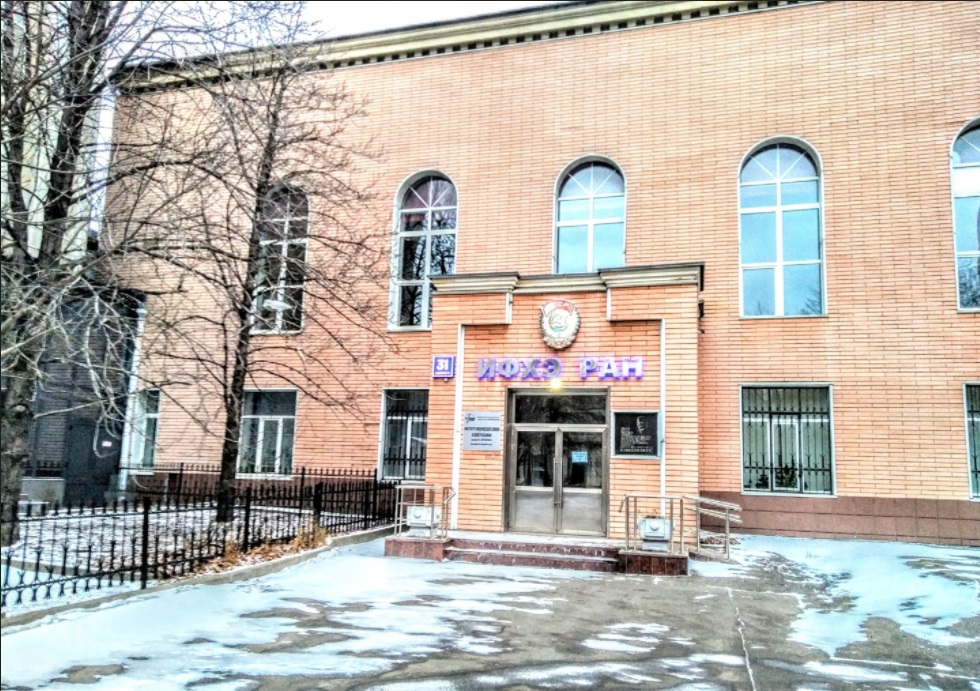Vladimir Aleksandrovich
Kistyakovsky
1865-1952

Vladimir Kistyakovsky was a Russian and Soviet physicochemist, Academician of the USSR Academy of Sciences. He was born in the family of a professor – lawyer Aleksander Fedorovich Kistyakovsky. He received an elementary home education and a good upbringing in a professorial family. At the age of 18, Vladimir Aleksandrovich Kistyakovsky graduated from the Second Kiev Gymnasium and entered the Physics and Mathematics Faculty of Imperial St. Petersburg University. General chemistry was taught by Professor D. I. Mendeleev, analytical chemistry was taught by N. A. Menshutkin. In 1888 he already conducted research work in the Butlerov laboratory under the guidance of Butlerov’s closest student and employee M.D. Lvov. A year later, Lvov presented Kistyakovsky’s work “The effect of aqueous solutions of arsenic acid on liquid isobutylene and amylene” at a meeting of the Russian Physico-Chemical Society. The report was soon published. Then Kistyakovsky left organic chemistry and switched entirely to research in the field of physical chemistry. After graduating from the university, Kistyakovsky decided to go to Ostwald’s Leipzig Laboratory, where he thoroughly studied a new method of physico-chemical research and appropriate equipment. A part of his research on the electrical conductivity of double salts was carried out with the direct consultations of Arrhenius, who at one time replaced the departed assistant Ostwald Nernst. In Leipzig, Kistiakovsky published his first experimental electrochemical study on the “electrochemical state” of double salts. After completing his research in Leipzig, Vladimir Aleksandrovich went to Paris for a while, where he attended a physics course at Sorbonne with Gabriel Lippmann, widely known in the circles of physical chemists. On November 27, 1890 Kistyakovsky returned to St. Petersburg. By the autumn of 1904, when the practical classes of students began, the equipment of the laboratory was still far from finished. Therefore, along with pedagogical work, Vladimir Aleksandrovich continued to replenish the laboratory. He conducted extensive correspondence with foreign firms, almost annually travelled abroad to inspect and order equipment, purchasing necessary appliances and dishes there. At Polytechnic Institute, he completed a number of his major works and developed new areas of research. On June 7, 1918 Kistyakovsky was sent by Polytechnic Institute to study kaolins and marls in the Mogilev, Kiev, Vitebsk provinces and in the Caucasus. In the period from 1922 to 1932 the final formation and recognition of the film theory of corrosion took place, the beginning of which was laid back in 1907-1913. In the article “Colloid-electrochemistry” Kistyakovsky summed up the film theory, its development, outlined the further stages of its development. The theory was widely recognized, and in 1925 the scientist was elected a corresponding member, and in 1929 – a full member of the USSR Academy of Sciences. In the same year, he was awarded the title of a full member of the Electrochemical Society in New York and an honorary member of the Society of Lovers of Natural Science, Anthropology and Ethnography in Moscow. By this time, he was already a member of the German Bunsen Electrochemical Society, the German Colloidal Chemical Society and the French Physico-Chemical Society. Kistyakovsky’s research on corrosion was carried out in various directions based on the film theory of corrosion. Since 1931, in the connection with the work on corrosion protection of oil—loading vessels, a new direction had emerged – corrosion by polyphase contact. At the beginning of the Great Patriotic War, Colloidal Electrochemical Institute was evacuated to Kazan. There he proposed a topic on the study of motochemical processes for military signaling, put forward new research plans. V.A. Kistyakovsky personally drew up a five-year work plan for the institute, namely the laboratory of corrosion of ferrous metals. In the following years (1951-1955), Vladimir Aleksandrovich intended to study at least three new metal corrosion inhibitors in electrolyte solutions. Awards: Full member of the USSR Academy of Sciences, full member of the Electrochemical Society in New York, honorary member of the Society of Lovers of Natural Science, Anthropology and Ethnography in Moscow, member of the German Bunsen Electrochemical Society, member of the German Colloidal Chemical Society, member of the French Physico-Chemical Society, 2 Orders of Lenin.
Address: Moscow, Leninsky Prospekt, 31, bldg. 4

